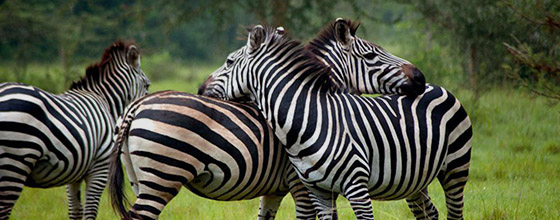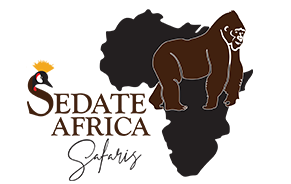
Lake Mburo aka The Eland Home
Uganda Savannah Tours | Wildlife safaris in Uganda
Lake Mburo covers an area of 370 km² between 1220m – 1828m above sea level. Wetland habitats comprise 20% of the park’s surface. Lake Mburo offers some novel means of game viewing; in a vehicle; on a mountain bike, by boat, on foot, and on horseback. This compact jewel of a park is ideally placed for an overnight break between Kampala and the protected areas of western Uganda. A mosaic of habitats includes rock outcrops, savanna, acacia woodland, bush, forest, swamp and lakes that support a wealth of wildlife including species that are rare or absent from other parks in Uganda. Birding is also rich with papyrus and acacia species being particularly well represented. Visitors need not limit themselves to a game drive; the park can also be explored using mountain bikes, by boat, on foot, and on horseback.
Wildlife
At only 370km2, Lake Mburo National Park is small compared to many East African parks but it is home to a surprising diversity of wildlife with 69 mammal species and 332 bird species. A number of the park’s herbivores are rarely, if at all, found elsewhere in Uganda. Lake Mburo is the only park that contains impalas and the only one in western Uganda with Burchell’s zebra and eland. Topi are only found elsewhere in Queen Elizabeth National Park. The species list was expanded in 2015 when a number of Rothschild’s giraffe were relocated to Lake Mburo from Murchison Falls National Park. Leopards and hyenas are also present and, after years of absence, lions are once more sighted. Hippos and crocodiles live in the park’s 5 lakes, while the fringing swamps hide secretive wetland creatures such as the sitatunga antelope. The birdlist contains more ‘swamp specials’ such as the papyrus gonelek, papyrus yellow warbler, white-winged warbler and shoebill. Acacia woodland bird species are well represented around the rest camp at Rwonyo and in the lightly wooded grassland valleys east of Lake Mburo.
Access
Lake Mburo National Park lies between the towns of Masaka and Mbarara close to the main, south-westerly road that links Kampala to Bwindi, Kabale and the Rwandan border. The 228km drive from Kampala takes 3.5 hours. The park can also be reached from Kibale National Park, via Ibanda and Rushere, and from Queen Elizabeth National Park, via Ishaka and Mbarara. Three gates enter the park. Kyanyanshara Gate, which lies close to the upmarket Mihingo Lodge, is 18km south of Akagate trading centre, which is 14km west of Lyantonde. The 9km dirt road leading to Nshara Gate turns south from the main road, 500m west of Akagate. The 13km dirt road to Sanga Gate leaves the main road at Sanga trading centre, 13km from Akagate and 27kms from Lyantonde.
Climate
Lake Mburo National Park lies in a rain shadow between Lake Victoria and the Rwenzori Mountains and receives an average of 800mm of rain a year. Being near the Equator, the rainfall pattern is bimodal with the long rains occurring from February to June and the short rains from September to December. Rainfall is rather erratic and unpredictable but tends to be heaviest in April and November. The average recorded temperature is 27.50C with daily variations ranging from 21.50C to 340C. July and August are the hottest months.
When to Visit
Any time of the year.
Outside The Park
Village visits Most of the lodges in and around the park provide the opportunity to visit a local homestead and learn about traditional Banyankore life.
Lake Mburo boat trip Th e eastern shores of Lake Mburo can be explored by boat, departing from a jetty at the lakeside campsite near Rwonyo Rest Camp. Watch out for crocodiles and hippopotamus during the two-hour voyage. You can also sight a variety of birds including pelicans, herons and fi sh eagle and perhaps the rare shoebill. Fishermen with their own equipment may fi sh in the lake from the campsite by arrangement.
Game Drives
A network of game tracks explores the eastern hinterland of Lake Mburo, providing the chance to see a variety of savannah animals and birds. Night drives Night drives with a ranger guide provide the chance to see nocturnal animals such as bushbabys, pottos and perhaps even a leopard. Salt Lick Walk Guided walks explore the park around Rwonyo, culminating in a visit to a natural salt lake where wildlife can be viewed from a timber observation platform.
Night drives Night drives with a ranger guide provide the chance to see nocturnal animals such as bushbabys, pottos and perhaps even a leopard. Salt Lick Walk Guided walks explore the park around Rwonyo, culminating in a visit to a natural salt lake where wildlife can be viewed from a timber observation platform.
Forest Walk
This small tract of forest on the western side of Lake Mburo is home to a variety of forest bird species. Rubanga can be explored with a ranger guide.
Horseback safaris
The grassy ridges in the eastern part of Lake Mburo can be explored on horseback. This activity is operated by Mihingo Lodge. Mountain biking Rwakobo Rock and Leopard Tail Rest Camp both operate mountain biking trips into the national park at Nshara Gate.
View Points
South of Rwonyo, the Lakeside Track climbs onto Kigarama Hill which provides a panoramic view of Lake Mburo. Th is lake and seven more can also be seen from the equally dramatic Kazuma Lookout which lies at the top of a rather steep track accessed from the Ruroko Track near the Kazuma/Research Track junction.
Birding
Prime areas for birding in Lake Mburo include the acacia woodland along the Acacia and Research tracks; the wooded shores of Lake Mburo as seen from the Rwonyo launch (ideal territory for the African fi nfoot) and the lake’s northern fringe of papyrus wetland.
